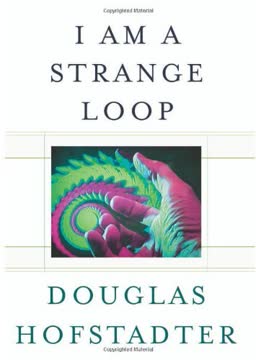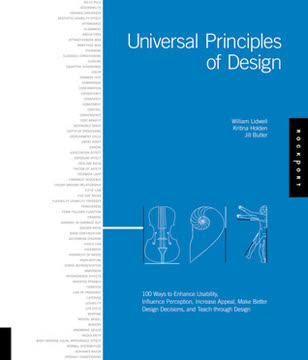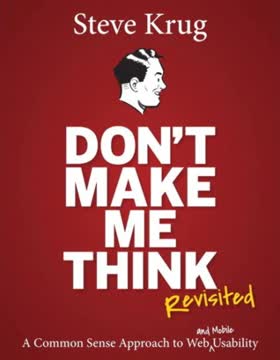Key Takeaways
1. Simplicity is achieved through thoughtful reduction
The simplest way to achieve simplicity is through thoughtful reduction.
SHE principle. The process of simplification can be approached through the SHE principle: Shrink, Hide, Embody. Shrinking an object or concept makes it more approachable and less intimidating. Hiding complexity behind a simple interface reduces cognitive load. Embodying quality in the simplified version maintains its value and appeal.
Thoughtful reduction examples:
- Removing unnecessary buttons from a device
- Streamlining a product's features to focus on core functionality
- Simplifying a complex process into fewer, more manageable steps
The key is to reduce without sacrificing essential functionality or value. This requires a deep understanding of the object or concept being simplified and its intended purpose.
2. Organization creates order from chaos
Organization makes a system of many appear fewer.
SLIP method. The SLIP method (Sort, Label, Integrate, Prioritize) is an effective approach to organizing information and creating simplicity from complexity. This process helps identify natural groupings and hierarchies within a system, making it easier to manage and understand.
Organization benefits:
- Reduces cognitive load by grouping similar items
- Improves efficiency in finding and using information
- Creates a sense of order and control
Effective organization goes beyond mere tidiness; it involves creating meaningful structures that enhance understanding and usability. The goal is to make complex systems appear simpler and more manageable through thoughtful arrangement and categorization.
3. Time savings equate to simplicity
Savings in time feel like simplicity.
Perception of efficiency. When processes or products save time, they are perceived as simpler and more valuable. This perception is rooted in our innate desire to maximize our limited time and resources.
Time-saving strategies:
- Automating repetitive tasks
- Streamlining workflows
- Providing clear, concise information
The challenge lies in balancing time savings with effectiveness. Simply making something faster doesn't necessarily make it better or simpler. The goal is to create solutions that save time while maintaining or improving the quality of the outcome.
4. Knowledge simplifies everything
Knowledge makes everything simpler.
Power of understanding. When we truly understand something, it becomes simpler to us. This principle applies to both using and creating products or systems. The more knowledge we have, the easier it is to navigate complexity.
Knowledge acquisition strategies:
- Breaking down complex concepts into digestible parts
- Providing clear, contextual information
- Encouraging hands-on learning and experimentation
Designers and creators should strive to make their products intuitive, but also provide pathways for users to gain deeper understanding. This balance between immediate usability and long-term mastery is key to creating truly simple yet powerful solutions.
5. Simplicity and complexity are interdependent
Simplicity and complexity need each other.
Balance and contrast. The relationship between simplicity and complexity is not adversarial but symbiotic. Simple elements can make complex systems more manageable, while complexity can add depth and richness to simple designs.
Balancing simplicity and complexity:
- Using simple interfaces to control complex systems
- Adding detailed elements to enhance simple designs
- Creating rhythms of simplicity and complexity in user experiences
The goal is not to eliminate complexity entirely, but to find the right balance that enhances usability and engagement. This balance will vary depending on the context and the user's needs and preferences.
6. Context is crucial in simplicity
What lies in the periphery of simplicity is definitely not peripheral.
Holistic approach. Simplicity doesn't exist in isolation; it's deeply influenced by its context. Understanding and considering the broader environment in which a product or system exists is crucial to achieving meaningful simplicity.
Contextual considerations:
- User's background and expectations
- Physical and digital environment of use
- Cultural and social factors
By taking a holistic view, designers can create solutions that are not just simple in isolation, but truly simple and effective within their intended context of use.
7. Embrace emotion in design
More emotions are better than less.
Emotional resonance. While simplicity often focuses on reducing complexity, it shouldn't come at the cost of emotional connection. Designs that evoke positive emotions can feel simpler and more satisfying to use, even if they're objectively more complex.
Incorporating emotion in design:
- Using aesthetics to create positive emotional responses
- Designing for moments of delight and surprise
- Allowing for personalization and self-expression
The challenge is to balance emotional richness with functional simplicity. The goal is to create designs that are not just easy to use, but also emotionally rewarding and engaging.
8. Trust is fundamental to simplicity
In simplicity we trust.
Building confidence. Trust allows users to engage with systems more freely and confidently, making complex interactions feel simpler. When users trust a product or system, they're more willing to explore and less anxious about potential mistakes.
Trust-building strategies:
- Providing clear, honest communication
- Ensuring reliability and consistency in performance
- Offering easy ways to correct mistakes or undo actions
Trust is earned over time through consistent positive experiences. Designers should focus on creating products that are not just simple to use, but also reliable, transparent, and forgiving of user errors.
9. Some things can never be simplified
Some things can never be made simple.
Accepting complexity. It's important to recognize that not everything can or should be simplified. Some systems are inherently complex, and attempts to oversimplify them can lead to loss of important functionality or understanding.
Strategies for managing necessary complexity:
- Providing clear explanations and context
- Breaking complex systems into more manageable parts
- Offering different levels of engagement for different users
The goal is not always to simplify, but to make complexity more manageable and understandable. This might involve creating simpler interfaces for complex systems or providing better tools for navigating and understanding complexity.
10. Simplicity is subtracting the obvious and adding meaning
Simplicity is about subtracting the obvious, and adding the meaningful.
Essence of simplicity. True simplicity goes beyond mere reduction; it involves identifying and emphasizing what's truly important while removing or de-emphasizing the rest. This process requires a deep understanding of the purpose and context of the design.
Achieving meaningful simplicity:
- Identifying core functions and values
- Removing or hiding non-essential elements
- Enhancing and emphasizing meaningful features
The challenge is to strike the right balance between reduction and enhancement. The goal is to create designs that are not just simpler, but more meaningful and effective in achieving their intended purpose.
Last updated:
FAQ
What's "The Laws of Simplicity" about?
- Author and Focus: Written by John Maeda, the book explores the concept of simplicity in design, technology, business, and life.
- Core Message: It presents ten laws and three keys to achieving simplicity, emphasizing the balance between simplicity and complexity.
- Personal Mission: Maeda shares his journey and mission to achieve simplicity in the digital age, drawing from his experiences at MIT.
- Practical Application: The book provides practical advice and insights for individuals and businesses seeking to simplify their processes and products.
Why should I read "The Laws of Simplicity"?
- Understanding Simplicity: It offers a comprehensive framework for understanding and applying simplicity in various aspects of life and work.
- Practical Insights: The book provides actionable insights and strategies that can be applied to design, technology, and business.
- Personal Growth: Readers can gain a deeper understanding of how to balance simplicity and complexity in their personal and professional lives.
- Inspiration: Maeda's personal anecdotes and experiences offer inspiration and motivation for those seeking to simplify their lives.
What are the key takeaways of "The Laws of Simplicity"?
- Ten Laws: The book outlines ten laws that guide the pursuit of simplicity, such as "Reduce," "Organize," and "Learn."
- Three Keys: It introduces three keys—Away, Open, and Power—that are crucial for achieving simplicity in technology.
- Balance of Simplicity and Complexity: Simplicity and complexity are interdependent, and finding the right balance is essential.
- Practical Application: The laws and keys can be applied independently or together to simplify design, technology, business, and life.
What are the best quotes from "The Laws of Simplicity" and what do they mean?
- "Simplicity is about subtracting the obvious, and adding the meaningful." This quote encapsulates the essence of simplicity, emphasizing the importance of removing unnecessary elements while enhancing what truly matters.
- "In simplicity we trust." This highlights the role of trust in achieving simplicity, whether in design, technology, or personal interactions.
- "More emotions are better than less." This suggests that emotional engagement can enhance the experience of simplicity, making it more meaningful and impactful.
- "What lies in the periphery of simplicity is definitely not peripheral." This underscores the importance of context and the surrounding environment in understanding and achieving simplicity.
What is the "Reduce" law in "The Laws of Simplicity"?
- Core Principle: The simplest way to achieve simplicity is through thoughtful reduction, focusing on removing unnecessary elements.
- Practical Example: Maeda uses the example of a DVD player, suggesting that reducing buttons to only the essential ones can simplify its use.
- Balance: The challenge lies in finding the balance between simplicity and functionality, ensuring that essential features remain.
- SHE Method: The law introduces the SHE method—Shrink, Hide, Embody—as strategies to achieve reduction.
How does "The Laws of Simplicity" define the "Organize" law?
- Purpose of Organization: Organization makes a system of many appear fewer, helping to manage complexity effectively.
- Practical Strategies: The book suggests using methods like sorting, labeling, integrating, and prioritizing (SLIP) to organize effectively.
- Visual Design: Maeda emphasizes the importance of visual organization, using tools like the tab key to create order from chaos.
- Gestalt Principles: The law draws on Gestalt psychology, highlighting the mind's ability to perceive patterns and groupings.
What is the "Time" law in "The Laws of Simplicity"?
- Time and Simplicity: Savings in time feel like simplicity, as reducing wait times can enhance the perception of simplicity.
- Practical Application: The book discusses strategies like shrinking time, hiding time, and embodying time to manage it effectively.
- Progress Bars: Maeda highlights the use of progress bars as a way to manage the perception of time during waiting periods.
- Balancing Time: The law encourages finding ways to make waiting more tolerable or to reduce wait times altogether.
How does "The Laws of Simplicity" address the "Learn" law?
- Knowledge and Simplicity: Knowledge makes everything simpler, as understanding a system can reduce its perceived complexity.
- Teaching and Learning: Maeda shares insights from his experience as a professor, emphasizing the importance of teaching the basics.
- Motivation: The law discusses the role of motivation in learning, whether intrinsic or extrinsic, to facilitate understanding.
- Relate-Translate-Surprise: The book introduces this method as a way to make complex systems more relatable and understandable.
What is the "Differences" law in "The Laws of Simplicity"?
- Interdependence: Simplicity and complexity need each other, as contrast helps to highlight and appreciate simplicity.
- Rhythm and Balance: The law emphasizes the importance of rhythm in balancing simplicity and complexity over time and space.
- Practical Examples: Maeda uses examples like business cards and the Japanese tea ceremony to illustrate the interplay of simplicity and complexity.
- Cultural Context: The law acknowledges that cultural differences can influence perceptions of simplicity and complexity.
How does "The Laws of Simplicity" explain the "Context" law?
- Peripheral Importance: What lies in the periphery of simplicity is definitely not peripheral, as context plays a crucial role in understanding.
- White Space: Maeda discusses the importance of white space in design, allowing the foreground to stand out.
- Ambience: The law highlights the role of ambience and the surrounding environment in shaping experiences.
- Comfortably Lost: It encourages finding a balance between being directed and directionless, allowing for exploration and discovery.
What is the "Emotion" law in "The Laws of Simplicity"?
- Emotional Engagement: More emotions are better than less, as emotional engagement can enhance the experience of simplicity.
- Feel and Feel For: The law encourages designers to connect with their own emotions and empathize with users.
- Nude Electronics: Maeda discusses the trend of accessorizing simple devices to add warmth and personality.
- Aichaku: The book introduces the Japanese concept of aichaku, or emotional attachment to objects, as a form of hidden ornamentation.
How does "The Laws of Simplicity" address the "Trust" law?
- Trust in Simplicity: In simplicity we trust, as trust is essential for achieving simplicity in design and technology.
- Lean Back: Maeda uses the example of Bang & Olufsen to illustrate the importance of trust in creating a relaxing experience.
- Omakase: The law draws parallels with the Japanese omakase dining experience, where trust in the chef leads to a satisfying meal.
- Undo: It discusses the role of the undo function in digital media, allowing users to trust their actions without fear of mistakes.
Review Summary
The Laws of Simplicity receives mixed reviews, with an average rating of 3.90 out of 5. Readers appreciate Maeda's concise presentation of 10 laws and 3 key principles for designing simple systems. Many find the concepts insightful and applicable to various fields, praising the book's brevity and thoughtful approach. However, some criticize it for lacking depth, being too focused on product design, or containing obvious information. Several reviewers note that while the ideas are interesting, the examples and explanations could be more effective.
Similar Books










Download PDF
Download EPUB
.epub digital book format is ideal for reading ebooks on phones, tablets, and e-readers.





